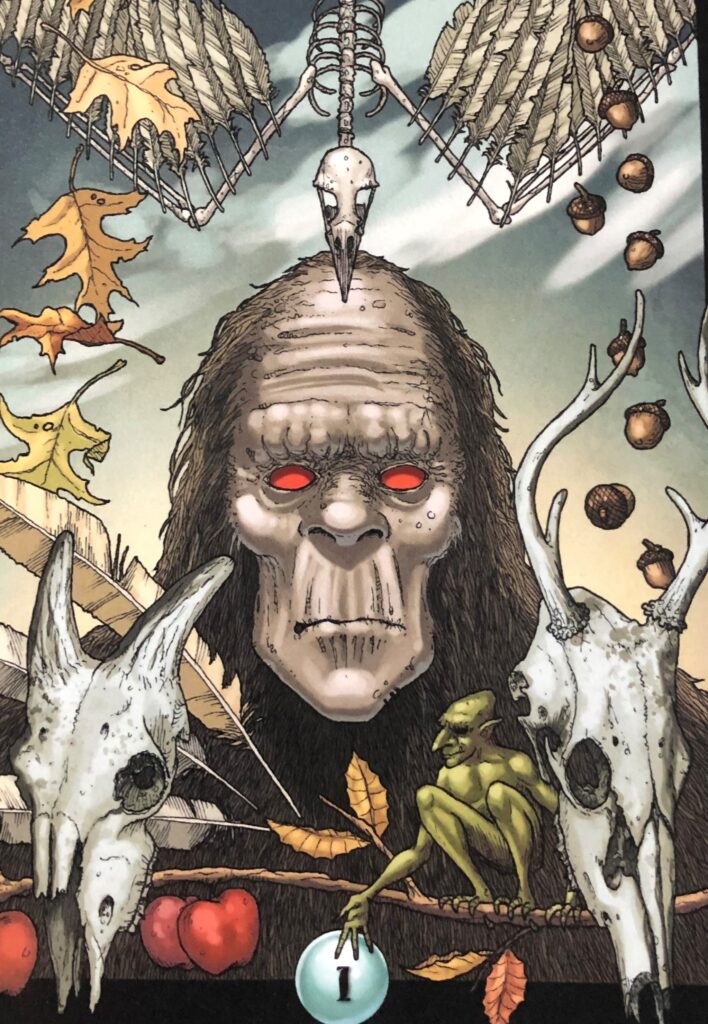
Where The Footprints End: High Strangeness and the Bigfoot Phenomenon. Volume 1: Folklore by Joshua Cutchin and Timothy Renner. Dark holler arts, 2020. ISBN: 9798634992617. Paperback: 292 pp.
Where The Footprints End: High Strangeness and the Bigfoot Phenomenon. Volume 2: Evidence by Joshua Cutchin and Timothy Renner. Dark holler arts, 2020. ISBN: 9798580596747. Paperback: 298 pp.
At first sight, readers of this blog might be asking themselves: what has a detailed, nearly 600-page analysis of encounters with large, upright, hairy, bipedal hominids got to do with my usual subject-matter? Particularly when the existence of such creatures is hotly disputed and has been a subject of sustained controversy over many decades? Doesn’t a review of anything dealing with such a subject more properly belong on a site devoted to zoology, mammalogy or anthropology? The answer to these and other questions lies in this fascinating, co-authored, two-volume study; one that reveals that there’s more to the phenomenon – or, rather, phenomena – than may at first meet the eye.
The clue is in the subtitle. ‘High Strangeness’ cases, the authors argue, challenge the conventional cryptozoological hypothesis that Bigfoot (or Sasquatch) are purely physical creatures. They dub this ‘purely physical’ argument the ‘Flesh and Blood Hypothesis’ (F&BH) and much of the content of this two-volume work is devoted to its refutation. Instead, they argue, Bigfoot encounters are more akin to those involving spiritual and paranormal manifestations and they devote much time to exploring the parallels.
Another clue lies within folkloristics and the study of mythology generally. So, where folklore and mythology contain parallels to High Strangeness Bigfoot episodes – an argument that Cutchin and Renner consistently present – the authors consider such comparison both useful and potentially revealing, even though (as they make clear from the outset) they do not seek to explain Bigfoot purely in terms of mythology and folkloristics, but simply to flag up the consistencies between the content of such traditions and Bigfoot encounters in search of the meaning of such episodes overall. To this end, the authors draw detailed and sustained attention to parallels between Bigfoot and such ‘creatures’ as the Mapinguari of South America, Europe’s Woodwose, the Almas of Eurasia, Nepal’s Yeti, the Yowie of Australia, and so on: particularly in volume one.
The same goes for other ‘cross-over’ aspects which they explore in detail and at length across both volumes. So, for example, early on they consider the parallels between poltergeist phenomena and those manifested within some Bigfoot encounters, such as lithobolia. As a result they employ the concept of wildnisgeist in order to underscore the parallels: where poltergeist phenomena are generally (although not always) indoor manifestations, Bigfoot might usefully be seen as poltergeists of the ‘great outdoors.’ Elsewhere, they consider other cross-over aspects, including those in which certain details of Bigfoot events feature unusual lights, odd appearances and disappearances, mimicry, shapeshifting, ghosts, UFO ‘close encounters’, Old World fairies, women in white, and tracks that end abruptly in the middle of nowhere.
As intriguing as the authors’ hypotheses are, they are not without significant flaws. For one thing, many of the cases presented seem to have been taken from blogs, podcasts, youtube posts, Bigfoot websites, and other comparable online sources and unfortunately these are rarely subjected to critical and/or sustained scrutiny. Indeed, this rather uncritical ‘scattergun’ approach made me think of lithobolia again, with the (very many) cases cited across the two volumes taking the place of stones being flung hither and yon. Fewer cases examined in much greater detail would have made for a far more convincing study. Another question surrounds the arrangement of material. So, for example, volume one is broadly devoted to folklore and volume two to actual cases, yet consideration of Bigfoot-as-trickster is given in volume two. The same could be said of other aspects of this sprawling study, which would certainly have benefitted from more careful arrangement of material.
This being said, Where The Footprints End works as a fine introduction to the study of Bigfoot generally and the authors do more than enough to call the Flesh and Blood Hypothesis into question. Whether they do enough to show that Bigfoot encounters really parallel the rich range of paranormal, folkloristic and mythological narratives which they present may, however, be questioned. A tighter, more closely argued study might have made for a much more convincing set of conclusions.
This review first appeared in Fellowship Review, No. 254, Winter 2021, pp. 37-9.